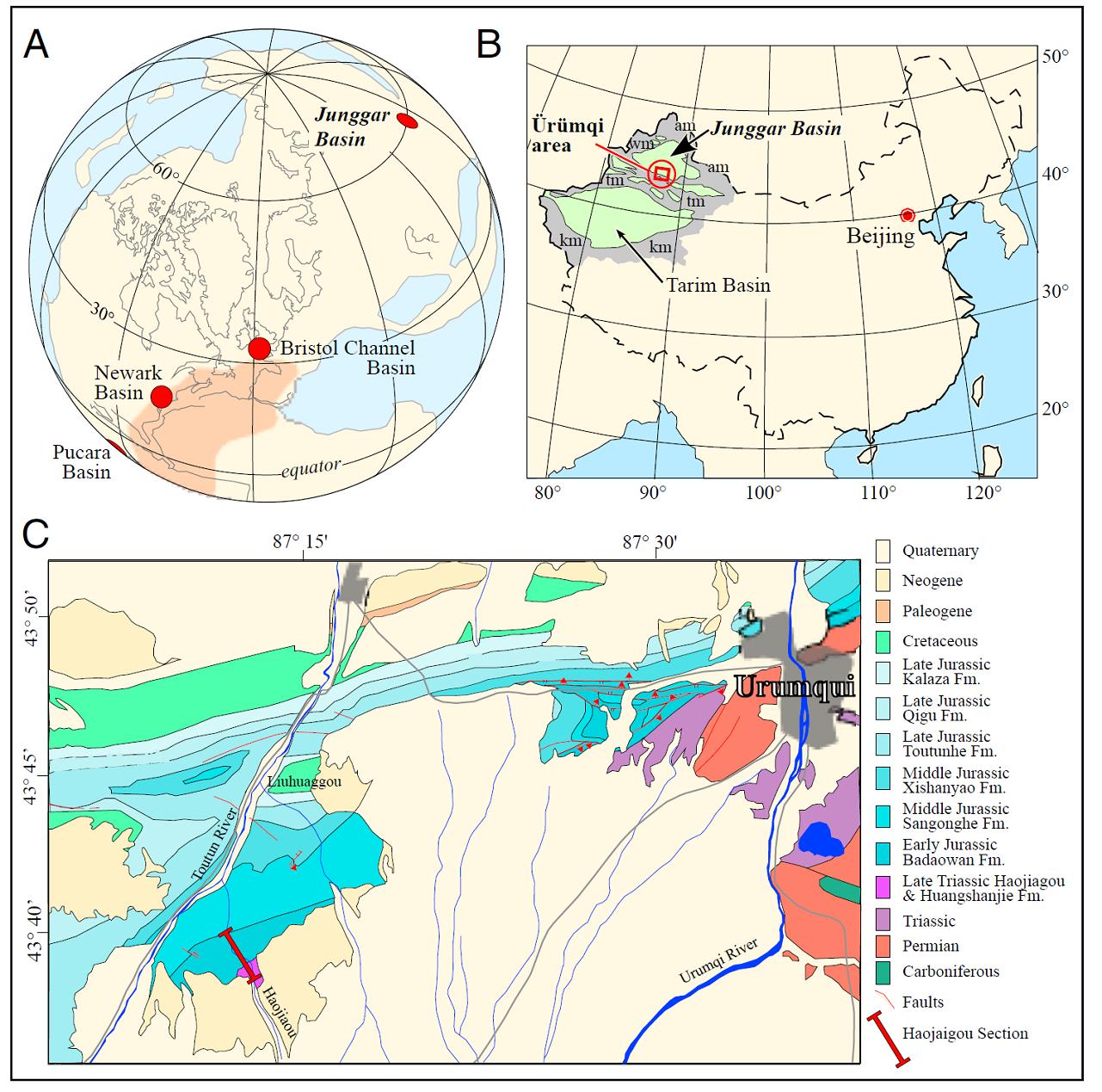A paper entitled “Triassic-Jurassic climate in continental high-latitude Asia was dominated by obliquity-paced variations Junggar Basin, Ürümqi, China” by Prof. SHA Jingeng from Nanjing Institute of Geology and Palaeontology, Chinese Academy of Sciences and his colleagues has been recently published online in PNAS.
Our understanding of Triassic and Early Jurassic high-latitude climate, biotic evolution, mass extinction, and geochronology is very poor in contrast to that of the contemporaneous tropics. This poor resolution impairs an elucidation of the basic patterns of Earth system function during the early Mesozoic. Besides, integral to the long-term chaotic behavior of the Solar System are the secular resonances of the planets, particularly for the inner Solar System.
Analysis of the LITH proxy of environmental change shows that an astronomical signal in which obliquity is dominant can be extracted from lacustrine strata of the high-latitude (~60º N) Junggar Basin straddling the end-Triassic extinction and Triassic-Jurassic boundary. This is dramatically different from the climate precession-dominated continental tropics. In combination, the data are incompatible with published astronomical solutions for the Triassic-Jurassic in phase and amplitude, consistent with chaotic behavior of the Solar System whereas, at the same time, the Earth-Mars orbital resonance seems to have been in today’s two-to-one ratio of eccentricity to inclination, providing a constraint for the Earth-Mars orbital resonance for around 201 Ma.
With the prospect of the acquisition of better temporally resolved records from deeper lake settings in the Junggar and other basins, the use of more directly climate-sensitive proxies, and additional exploration of the paleobiological context of the strata, it will be possible to test these findings, constraining the history of Solar System chaos, during this transitional time in Earth history.
The research was financially supported by the National Basic Research Program of China, National Natural Science Foundation of China, Chinese Academy of Sciences, etc.
Related information of this paper: Jingeng Sha, Paul E. Olsen, Yanhong Pan, Daoyi Xu, Yaqiong Wang, Xiaolin Zhang, Xiaogang Yao, and Vivi Vajda. Triassic-Jurassic climate in continental high-latitude Asia was dominated by obliquity-paced variations (Junggar Basin, Ürümqi, China). PNAS. Doi:10.1073/pnas.1501137112.

Paleogeographic position of the Junggar Basin (A), present position of the Junggar Basin (B), and map of the surficial geology of the Ürümqi area (C).

LITH Index data of Junggar Basin (C) and other correlative sections.

Photograph of portion of the Haojiagou section including beds 45-53.
